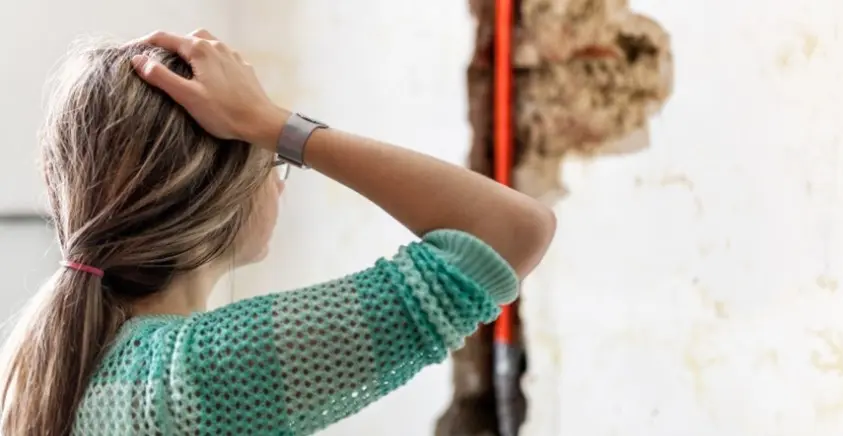Why Do Pipes Freeze in Kansas City Winters?
When temperatures drop below 32°F (0°C), standing water inside pipes begins to freeze. As the ice expands, it creates pressure inside the pipe, and when that pressure has nowhere to go, the pipe bursts—sending gallons of water flooding into your home.
Certain areas of a home are more vulnerable to frozen pipes, including:
- Unheated basements and crawlspaces
- Attics and garages with exposed plumbing
- Exterior walls that aren’t well insulated
- Cabinets under sinks, especially on exterior walls
A single burst pipe can cause thousands of dollars in damage, soaking floors, ruining drywall, and creating the perfect environment for mold growth. That’s why taking action before the freeze hits is critical.
How to Prevent Frozen Pipes Before Winter Hits
Winterizing your home doesn’t have to be complicated. Taking a few simple precautions can save you from a major headache when the temperatures drop.
1. Insulate Exposed Pipes
Pipes in unheated areas should be wrapped with pipe insulation or heat tape. Focus on basements, crawlspaces, attics, and exterior walls where cold air can reach pipes easily.
2. Keep Your Home Warm
Even if you’re away, set your thermostat to at least 55°F. A warm house means warm pipes, reducing the risk of freezing.
3. Let Faucets Drip
On especially cold nights, leave a small trickle of water running from faucets connected to vulnerable pipes. Moving water is less likely to freeze, and the dripping relieves pressure in the pipes.
4. Open Cabinet Doors
In kitchens and bathrooms, open cabinet doors under the sink to allow warm air to circulate around the pipes. This is especially helpful if your sink is located on an exterior wall.
5. Seal Cracks and Drafts
Cold air can enter through cracks in walls, floors, and foundation gaps, making it easier for pipes to freeze. Seal any air leaks around windows, doors, and pipe openings.
6. Disconnect Outdoor Hoses
Before the first freeze, disconnect and drain garden hoses. Shut off outdoor faucets and use insulated covers to protect them from the cold.
7. Know Where Your Water Shut-Off Valve Is
If a pipe does burst, shutting off the main water supply immediately can prevent further flooding. Make sure everyone in your household knows where the main shut-off valve is located.
What to Do If Your Pipes Freeze
Even with precautions, pipes can still freeze in extreme cold. If you turn on a faucet and only a trickle comes out, you may have a frozen pipe. Here’s what to do:
Locate the Frozen Pipe
Check exposed pipes in unheated areas like basements, crawlspaces, or garages. If no pipes are visible, the freeze may be inside a wall.
Apply Heat
Use a hairdryer, heating pad, or space heater to warm the frozen section of the pipe. Never use an open flame, as it can cause fire hazards.
Keep Faucets Open
As the ice melts, running water will help flush out the remaining blockage and relieve pressure inside the pipe.
Call a Professional If Necessary
If you can’t locate the frozen section or if the pipe remains blocked, it’s best to call a professional. A frozen pipe that isn’t thawed properly can burst unexpectedly, leading to severe water damage.
What to Do If a Pipe Bursts
A burst pipe is an emergency that requires immediate action to prevent major damage. Follow these steps:
- Shut off the main water supply immediately to stop more water from flowing into your home.
- Turn off electricity in the affected area if water is near electrical outlets or appliances.
- Remove excess water using towels, mops, or a wet/dry vacuum to minimize damage.
- Call a water damage restoration expert like Fine Restoration for immediate assistance.
Fine Restoration – Kansas City’s Trusted Water Damage Experts
Every winter, homeowners across Kansas City deal with frozen and burst pipes that could have been prevented with the right precautions.
If you suspect your pipes are frozen, or worse—if you’ve had a pipe burst—don’t wait for the damage to spread.
Also Read-Eco-Conscious Tech Disposal: Smart Ways to Recycle and Repurpose Old Electronics
